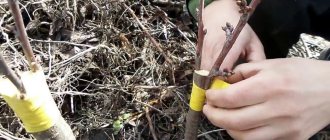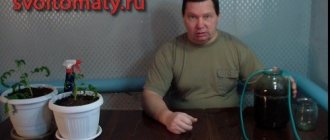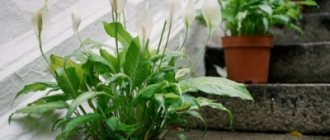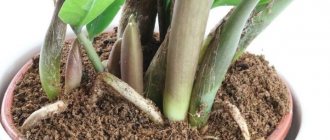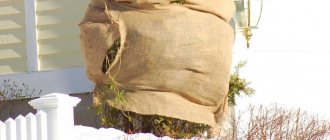Forcing - what is it?
Forcing is a technique that allows you to bring plants closer to flowering and activates growth and development. Most often, this technology is used for bulbous plants.
There are several ways to force bulbs:
— a way to regulate the time of natural recreation;
- creating natural conditions for the plant.
A prerequisite is that the plant goes through all stages of development. The mentioned technique is used to obtain flowers by the required date.
Rules
Each plant variety is special, and each of them has its own approach. However, there are rules that must be followed regardless of the variety and type of plant.
General rules:
— the selection of material should be taken with special care (the bulb should be large in size, with dense and solid scales).
— use flower varieties suitable for forcing techniques;
- treat the bulb before planting (use a light solution of manganese);
— neutralize pathogenic bacteria using special preparations.
By strictly adhering to the above rules, you will receive a wonderful gift for the holidays. The main thing is to remember that each variety has its own specific method.
After going through all stages of forcing, you should provide the flowers with suitable care.
First of all, selection of bulbs. As you already know, they should be big and healthy. If you have the opportunity to dig up flowers from the spring flowering period that tolerate the cold season well, go for it.
Flowers for decorative use, in order of priority, must go through the stage of stratification. The bulbs of these flowers are sent to a cold place for 3 months. Storage takes place in an open bag with an air temperature of -5 to +4 degrees. To avoid rotting, they should be constantly inspected.
After completing the resting stage, you should proceed directly to disembarkation. It is important to know that the soil must be of high quality, with the addition of humus and sand. You can also use special fertilizers.
Planting and caring for the plant
Planting can occur in various containers. The sprouts must be secured in a vertical position, taking into account that there should be a distance of about 2 centimeters between them. Next, you need to sprinkle the bulbs with a small layer of soil and compact them. When planting hyacinth, cyclamen and gimmeastrum, the bulbs protrude slightly from the ground. In all other cases, plant the plant deep in the soil.
You can also mix several types of flowers in one pot. It is important to take into account that the timing of their flowering is the same. Place taller plants in the middle and shorter ones at the edges. Mulch the soil with a layer of moss. It is worth pouring soil into the slides in such quantities that there is a distance of two centimeters to its edge. If you use bulbs of different sizes, then their arrangement should be staggered. After planting, it is necessary to water the plant abundantly.
Place pots with plants in a cool room. Leave them there until you see green sprouts. Next, they are moved to an area with good sunlight. After which the plant must be constantly watered. Flowers should be kept in sunlight until their buds bloom. After which they are removed. If a large amount of greenery sprouts (which prevents the opening of buds), the pots are placed in a cold place for a couple of days. The period of plant development is regulated in the same way.
At the last stage of forcing, the flowers need to be allowed to “catch their breath.” Wait until the leaves fall off and move the plant into the garden.
Forcing tulips on March 8
Tulip bulbs for forcing
Tulips are easy to force, and the most important condition for successfully growing these flowers in winter is well-organized artificial lighting. But first you need to determine which bulbs are suitable for forcing and which are not. To grow tulips at home in winter, you need extra bulbs with a diameter of 12/12+ (which means 40 mm or more in circumference), first or second parsing (from 30 to 40 mm in circumference) - the larger the bulb, the larger the flower.
- Tips for Growing Amaryllis
But size isn't everything. It is also important what the weight of the bulb is, since a heavier bulb is a sign that it already contains a flower bud. It happens that small bulbs are heavier than large ones, which are simply overfed with nitrogen. Bulbs weighing less than 25 g are not suitable for forcing.
When to plant for forcing
According to the timing of flowering, forcing can be early (forcing tulips before the New Year and before Orthodox Christmas), medium (flowering lasts throughout January) and late (flowering from February to March, and sometimes until April). In order to grow tulips by a specific date, you need to know when to start forcing. Early forcing of tulip bulbs requires planting in late summer or early autumn, and forcing on March 8, like the middle forcing, requires planting the bulbs during October-November.
for early forcing : Apricot Beauty, Brilliant Star, Dixis Favorite, Christmas Marvel, Lustige Battle. For the average: Scarborough, Confux, Apeldoorn and Oxford. For late forcing, dedicated to International Women's Day, the following varieties are suitable: Parade, Diplomat, Vivex, London, Kis Nelis and Eric Hofsier.
Forcing tulips at home
So, we found out that forcing tulips by March 8 requires planting the bulbs in late October or early November. Before planting, peel the covering scales from the bulbs to inspect them for disease damage and also to speed up their rooting. Treat the bulbs with a bright pink disinfectant solution of potassium permanganate.
Planting and caring for tulips in the garden
The optimal substrate for forcing tulips is a mixture of one part river sand, one part compost or rotted manure and two parts garden soil with the addition of some wood ash. Fill the forcing container two-thirds full with this substrate and compact it slightly, then place the tulip bulbs on the surface at a distance of 1 cm from each other and lightly press their bottoms into the soil. Fill the containers to the top with the same substrate or clean sand and pour generously with a two percent solution of calcium nitrate.
If the soil settles from the liquid and the tops of the bulbs are exposed, add more sand or substrate so that there is a small layer of soil above the bulbs - 1-2 cm, then place the container in a dark place with a temperature of 5-9 ºC at an air humidity of about 75%. Do not allow the substrate to dry out; water it daily if necessary. As soon as sprouts appear, the temperature should be reduced to 2 ºC. About three weeks before the target date, place the container in a dark room with a temperature of about 13 ºC, and four days later place the sprouted bulbs in a bright room with a temperature of 16-18 ºC.
Now is the time to use additional lighting to increase the daylight hours for growing tulips to the required 10 hours. If the day is shorter, the tulips will begin to stretch painfully. When the buds acquire the color characteristic of the variety, the temperature must be lowered by a couple of degrees - this will make flowering longer and brighter. Caring for blooming tulips involves regular watering of the plants and periodic feeding with calcium nitrate.
Forcing tulips in a greenhouse is practiced mainly to obtain a large number of flowers for sale.
Forcing bulbs with water
This method is used for forcing daffodils and hyacinths.
To do this, you need transparent containers shaped like a flask. This is necessary to keep the flower in an upright position. Pour water so that there is a distance of 2 centimeters from the water to the edge of the flask. Afterwards, the flask with the plant is placed in a cold room for 21 days. After some time, the plant will take root. It is important to know that water must be constantly added to the flask, taking into account that the water should not reach the edge of the onion. After this, we move the plant to a room with a warmer temperature.
Forcing hyacinths by March 8
If you are the lucky owner of hyacinth bulbs, store them in a dry, dark place at a temperature of 17-18 ºC until planting. Keep in mind that forcing on March 8 takes from three to four months, and you need to prepare for this sacrament in the summer: in June or July, hyacinth bulbs are dug up after the leaves have completely dried. For forcing, you need dense, intact bulbs with a diameter of at least 5 cm. If you don’t have these, it won’t be too late to buy them in September at a flower shop.
In order for hyacinth to bloom in early March, it must be planted in early November. Two weeks before planting, the bulbs are disinfected for half an hour in a medium-strength solution of potassium permanganate or in Fitosporin. Then the bulbs are placed on a tray with their bottoms down, water is poured to a height of 2 cm, the root former is diluted in it and the tray with the solution and bulbs is removed into the vegetable section of the refrigerator - within two weeks in a cold environment, the roots of the bulbs begin to grow.
Forcing at home
Choose a pot that is at least 15cm high and the width of the pot depends on how many bulbs you are going to put in it. Place a drainage layer of expanded clay, pebbles, shards or sand on the bottom, then add a layer of a fertile mixture of peat, leaf soil and river sand in equal proportions. Place the hyacinth bulbs in the pot at a distance of 2.5 cm from each other and add so much more soil so that, after compacting it, the hyacinth bulbs protrude from it by a third.
Moisten the soil through a tray, cover the pot with black paper or film and keep it in a room with a temperature of about 10-12 ºC. After sprouts appear, replace the leaf with a dark paper cap. When the peduncle reaches a height of 3-4 cm, the cap can be removed and the pot moved to a bright place with a temperature a couple of degrees higher.
The optimal temperature for flower development is 16-18 ºC, but keep it away from heating devices, direct sunlight and drafts. All this time, make sure that the soil in the pot does not dry out. Watering is best done as before - in a tray, adding a little Epin, Kornevin or Heteroauxin to fresh water. It would be nice to add a little snow to the pot. If there is not enough light in the room, provide additional lighting for the hyacinths.
- How to water flowers (part 2)
Hyacinths - planting and care in the garden
You can grow hyacinth in a simpler way, the same way as green onions are grown on windowsills in the spring. Find a transparent narrow vessel, pour water into it, dissolve an activated carbon tablet in it so that the water does not spoil, place a circle of cardboard with the middle cut out on top of the neck: the point is that the hyacinth bulb does not touch the water, only regrown roots should be in the water bulbs. We place this structure in the refrigerator in November and wait for the sprout to appear, adding water to the vessel from time to time.
When the sprout reaches 5 cm, place the vessel on a cool windowsill and continue growing under the conditions described above.
